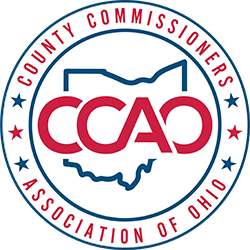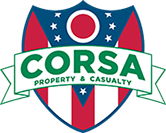Complete Story
10/06/2023
Issue Spotlight: Property Tax Basics and Commissioner Rollbacks
At CCAO, we are continually looking to educate our members on key issues being discussed in the state. The goal of Issue Spotlight is to concentrate on an issue that will be discussed in the legislature and provide our members with information and talking points to assist with your advocacy efforts.
With property values across the state increasing due to sexennial reappraisals and triennial updates, along with the recent creation of the Joint Committee on Property Tax Review and Reform, the General Assembly is poised to pursue property tax reform during the remainder of its 135th session.
This Issue Spotlight will define key terms and derivatives that are helpful to know as the legislature approaches reform: property value, millage, and levies. After these definitions are provided, we look at boards of county commissioners' authority to rollback inside millage.
Property Tax Definitions
Property Value
Property taxation's foundational piece of information is each property's value. There are two types of value: Appraised Value and Taxable (or Assessed) Value.
The appraised value is an estimate based on what a given property would sell for if placed on the open market. Appraisals are conducted by the county auditor in a six-year cycle and requires a site visit. Updates to appraisals are conducted at the midpoint of the six-year cycle and do not require site visits.
The taxable value of a property is equal to 35% of the appraised value. Property tax levies are applied to the taxable value. This generally means that 65% of the appraised value of one's property is exempt from taxation.
Millage
"Millage" is derived from the Latin for "thousandth," millesimum. In Ohio, millage is taken relative to a dollar, so one mill is $0.001. Ten mills equal a penny, one hundred mills equal a dime, and a thousand mills equals a dollar.
Ohio law recognizes two types of mills: inside millage and outside millage. These draw their name from Ohio's constitutional prohibition on the levying of property taxes greater than 1% of the value unless otherwise approved by the electorate. A 1% tax is equal to a tax on $0.01 of each dollar of the property's value. That means that up to 10 mills can be levied on a property without the need of approval by the voters.
These ten mills are referred to as "inside" millage because they are "inside" the constitutional limitation. Inside mills are shared among the applicable local governments; each government does not have its own discrete ten mills. Inside millage generally accounts for a relatively small portion of an individual property's total tax bill.
Any millage levied above the ten-mill limitation is called "outside" millage and must be approved by voters. Outside mills typically account for the majority of a tax bill for a given property.
Levies
Property tax levies is the formal name for any taxation of property. Generally, they can be broken into inside millage levies (do not require a vote), fixed-rate levies (require a vote as they increase outside millage to raise a variable amount based on values), and fixed-sum levies (require a vote as they increase outside millage to raise a set amount based on an obligation).
Fixed-sum levies are generally school district emergency levies or bond levies.
Fixed-rate property tax levies are one of three classifications: additional, renewal, or replacement.
- New or Additional Levy - A ballot issue which proposes new or additional millage for a specific purpose or purposes and which constitutes an increase in taxes. A new or additional levy is collected at the number of mills proposed on the ballot during the first year after the application of tax reduction factors to the millage in first and subsequent years resulting in a lower effective millage rate.
- Renewal Levy - A ballot issue that represents a continuation of a previously approved levy that is set to expire. A levy is renewed at the current effective millage rate after the application of tax reduction factors on the original millage passed by the voters. Renewal levies that are approved continue to be affected by tax reduction factors applied to the renewed millage. A renewal levy may be submitted to the voters along with either an increase or a decrease as one ballot question. A renewal levy is not a tax increase, unless combined with an increase.
- Replacement Levy - A ballot issue that would take the place of a tax levy which was previously approved by the voters. A levy that is replaced is at the millage rate when the levy was originally approved by the voters, not at the current effective millage rate, which has been reduced due to the previous application of tax reductions factors. A replacement levy may be submitted to the voters with either an increase or a decrease as one ballot question. A replacement levy is a tax increase.
For more information, please consult CCAO Handbook Chapter 14, Local Property Taxes.
With these key terms defined, we turn to a focus on how boards of county commissioners may rollback their share of inside millage.
Commissioner Inside Millage Rollback Authority
Counties are guaranteed at least 2/3 of the average mills that were being collected between 1929 and 1933 under the former 15-mill limitation, before the constitutional amendment creating the 10-mill limitation took effect in 1934. In 2022, 86 counties collected inside millage. The average county had 2.5 inside mills in place, typically devoted to its general fund or debt service (for a list by county, click here).
From time to time, a county may decide that it is not necessary to collect some, or all, of its inside mills. The Revised Code allows a county to reduce its inside millage rate without having its allotment reallocated by the County Budget Commission to other local governments. This procedure is outlined in R.C. 5705.313 and restated in CCAO Handbook Chapter 14.
A board of county commissioners may voluntarily reduce the county’s guaranteed inside millage for current expenses in two ways:
- When a county is increasing its permissive sales and use tax it may adopt an accompanying resolution reducing inside millage (R.C. 5705.313(A)(1)).
OR
- After a sales or use tax has been enacted and is in effect the commissioners may adopt a resolution reducing inside millage (R.C. 5705.313(A)(2)).
Thus, in order to voluntarily reduce inside millage, commissioners must either be increasing the rate of a permissive sales tax or have a sales tax in effect. It does not matter whether the sales tax has been enacted under R.C. 5739.021 or R.C. 5739.026. Since all counties currently levy a permissive sales tax, the authority effectively exists for all counties.
Some counties have used the inside millage rollback when increasing a permissive sales tax rate as a tactic to garner support for the sales tax increase. Commissioners may now, however, reduce any number of inside mills at any time as long as the reduction does not exceed the total estimated revenue from the sales and use tax.
The Commissioners must adopt a resolution to reduce inside millage, with a copy certified to the county auditor, which includes the following:
- The current inside millage rate.
- The number of guaranteed inside mills, if any, that are currently not being levied as a result of previous rollbacks.
- The number of inside mills that will be reduced.
- The resolution may either specify the number of years the reduction will be in effect or may simply state that the reduction will occur until the commissioners’ levy or re-impose all or part of the reduction in the future (R.C. 5705.313(C)).
- The tax year when the reduction will first apply.
No other taxing unit may levy any portion of the reduced millage, except as may be required by the budget commission to provide for the payment of debt charges of any subdivision or taxing unit in the county (R.C. 5705.313(B); see also R.C. 5705.31(D)). The county commissioners may, at any time, re-impose the inside millage that was reduced with the adoption of a resolution and certification to the county auditor.
Issue Spotlight originally appears in Statehouse Report. If you would like to subscribe to Statehouse Report, you may do so here.




